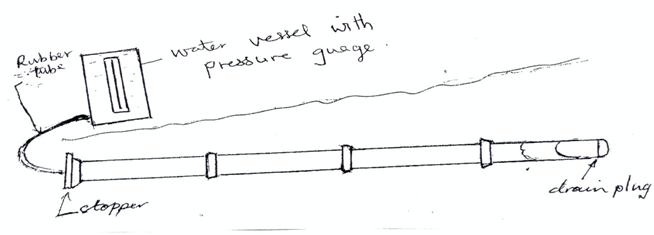Most candidates were able to:
- state the function of a trap in a sanitary installation;
- list the sanitary appliances.
However, they were unable to:
- describe the method of testing a drain line for water tightness;
- state the purposes of providing ceiling in a building.
The expected response to question 5 is as given below:
5(a) Function of a trap in sanitary installation:
To provide a water seal against the outflow of foul air
5(b) Five sanitary appliances:
(i) Water closet
(ii) Wash hand basin
(iii) Sink
(iv) Shower trays
(v) Bidets
(vi) Urinals
5(c)
 5(c) - Block the lower end of the drain line by inserting a drain stopper or plug. 5(c) - Block the lower end of the drain line by inserting a drain stopper or plug.
- Fill the section to be tested with water up to the upper end of the drain line.
- Plug the upper end with a drain stopper.
- Connect one end of rubber tubing to the stopper and the other to a water vessel with a pressure gauge.
- Allow an interval of about 45 to 60 minutes for observation. A leakage is indicated by a drop in the level of water in the vessel.
5(d) Three purposes for providing ceiling in a building
- It provides thermal insulation in the building.
- It serves as a barrier to sound transmission.
- It accommodates services.
- It enhances the beauty of the room.
- It conceals the roof members.
- It checks the movement of birds and insects into the building.
|



